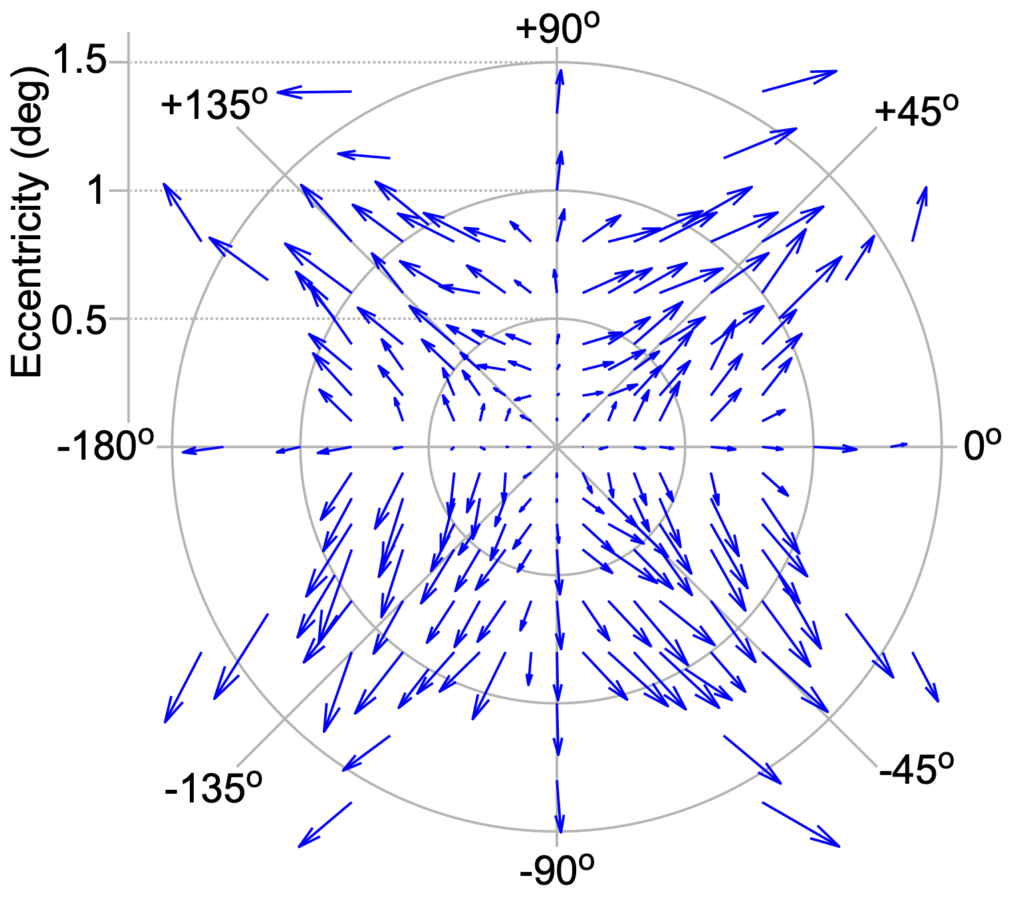We have a new paper that was just published in the Proceedings of the National Academy of Sciences (PNAS).
The foveal visual image region is a tiny part of our visual field in which we have very high visual acuity. This is why we typically direct our gaze such that our foveal visual image region is aligned with the object that we are currently interested in “looking at” and analyzing (e.g. to recognize a face or to assess whether a fruit is edible or not, and so on).
However, it is still unclear whether such a high fidelity representational advantage is still maintained when foveal visual image locations are committed to short-term memory. For example, imagine looking at a dot straight ahead. If the dot disappears for a split second, is your memory of the dot as high in fidelity as when the image was directly visible in your foveal visual image region?
In this work, we found a paradoxically large distortion in foveal target recall. So, if you are asked to remember a location that was just directly in front of you a few hundred milliseconds prior, you would grossly mis-estimate its location, even though you have full certainty that you saw the target dot very well. Moreover, your errors are qualitatively different in direction from errors that you might make if the target was far away from the foveal visual image region and in your visual periphery.

Most intriguingly, the large distortion had different properties whether you were remembering the target by looking at it with your eye or by pointing to it manually.

We believe that our results clarify how neural maps for visual targets and oculomotor control get affected when the targets disappear. This work is useful to help understand memory processes in the brain. It is also useful for human-factors engineering, whether for user interfaces or for clinical rehabilitation devices, in which virtual and augmented reality displays may be used. For example, computer systems can optimize when and where to place or remove visual stimuli, and also estimate the patterns of distortions in memory that the human users can exhibit.
The paper can be read in full here.
